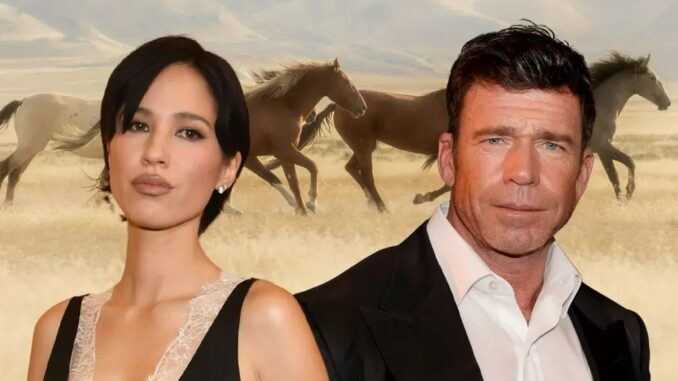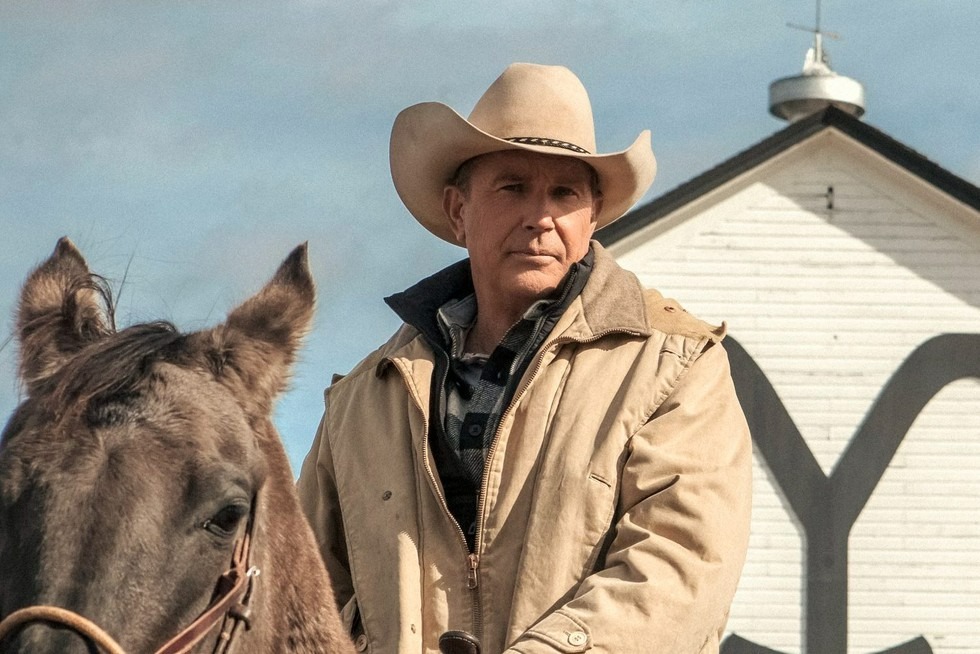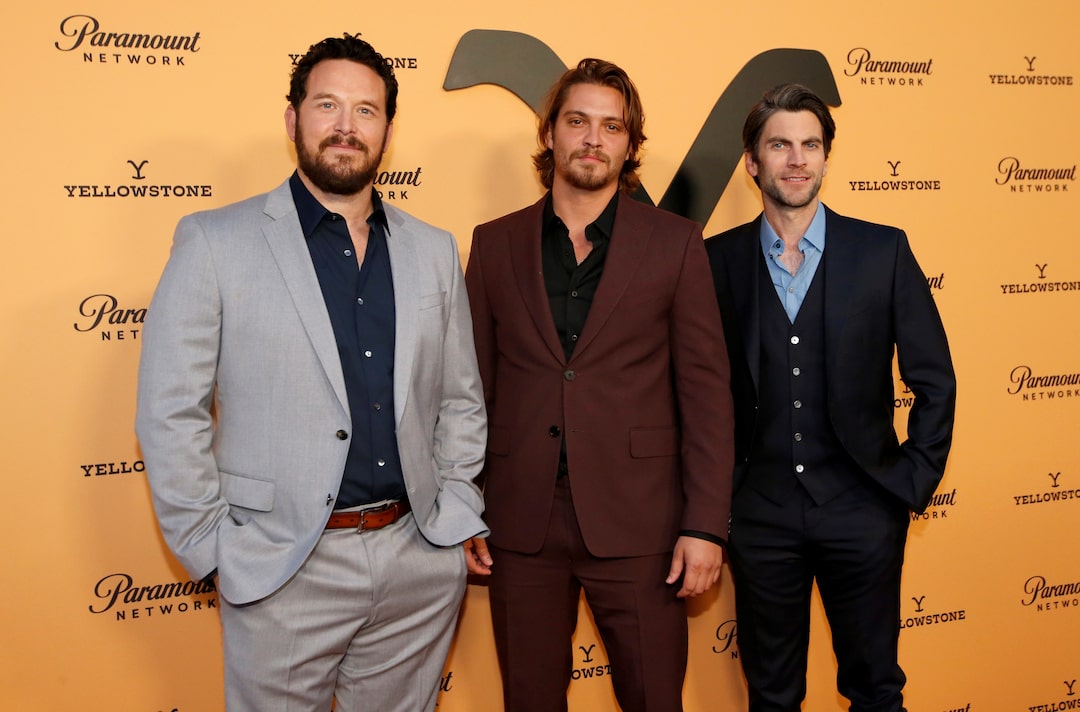
Kelsey Asbille’s role on the hit series Yellowstone has captivated fans worldwide, showcasing her dramatic range and strong on-screen presence. Yet, few could have predicted the mixture of raw emotions and genuine fear that came to a head when filming the series’ closing scenes. Now, for the first time, Asbille opens up about what truly made the final moments of Yellowstone so terrifying—and how that experience forever changed her perspective on acting, storytelling, and the magnitude of fan expectations.
The Pressure of a Monumental Show
From the moment it premiered, Yellowstone enthralled viewers with its rugged portrayal of life on the Dutton family ranch. Under the creative direction of Taylor Sheridan, the series wove together themes of family legacy, power struggles, and unrelenting devotion to the land. For Kelsey Asbille, who portrayed Monica Dutton, this show was not just a job—it was a transformative experience that evolved along with her character.
When asked about the final filming days, Asbille admits that the sheer weight of Yellowstone’s popularity bore down on everyone on set. Each cast member knew that millions of fans—around the globe—were eagerly awaiting how every plot thread would be tied up. “It was exhilarating,” Asbille recalled in an interview. “But it was also daunting to realize just how important these final scenes would be for viewers who had followed us from the beginning.”
This crescendo of audience anticipation elevated the stakes for the actors involved, sending an undercurrent of pressure through the set. With entire careers and future storylines hanging in the balance, the cast and crew felt compelled to deliver an ending that lived up to the show’s reputation for high drama and emotional intensity.
Stepping Into Monica’s Shoes One Last Time
Portraying Monica Dutton across multiple seasons was a significant endeavor for Asbille. The character’s journey involved heartbreak, resilience, and a profound exploration of her Native American heritage, all of which resonated deeply with the actress. Over the course of the series, Monica endured countless personal and familial hardships, ranging from physical injuries to traumatic losses that tested her spirit.

In these final scenes, Asbille had to embody not only Monica’s emotional state but also reflect the many hardships and triumphs that had shaped her evolution. “It almost felt like I was saying goodbye to a friend,” Asbille said. “I’ve lived with Monica for so many years, and walking away from that role made me incredibly emotional.”
The Reality of On-Set Tension
Although Yellowstone portrayed harrowing events—from dangerous ranching stunts to life-and-death confrontations—the tension felt by Asbille and her co-stars during the final days of shooting transcended the dramatic storylines. According to Asbille, the set was electric with an unusual mix of excitement and trepidation.
One of the biggest concerns, Asbille admitted, was balancing personal emotion with professional performance. Many of the core actors had grown close over the years; they formed bonds akin to family. Everyone realized that the final scenes would be among the last times they would perform together under the Yellowstone banner. That knowledge, combined with the narrative tension demanded by the script, created an almost tangible pressure in the air.
Why the Final Scenes Were Terrifying
Asbille has openly described the last scene she filmed as “terrifying,” but not necessarily for the reasons one might expect. Unlike a stunt-heavy sequence or elaborate confrontation, the tension was less about physical danger and more about emotional vulnerability.
“I don’t want to spoil anything for fans still catching up,” she said, “but that final moment was incredibly raw. I had to channel every ounce of emotion I’ve felt over the years playing Monica, and I needed to make sure it felt real.”
The fear stemmed from wanting to deliver an authentic performance, knowing that this closing statement would define the essence of Monica’s character. “I owed it to the fans,” Asbille explained. “The terror came from knowing how easily we could get it wrong.”
Collaboration With Fellow Cast Members
Starring opposite heavyweights such as Kevin Costner and Luke Grimes further intensified Asbille’s determination to make the final scenes memorable. She spoke fondly of Costner’s supportive demeanor on set, emphasizing how he encouraged everyone to stay present and grounded in their characters.
Luke Grimes, who played Kayce Dutton—Monica’s husband on the show—remained a steadfast partner in navigating the emotional complexities of their closing scenes. Asbille described their final on-camera moments together as particularly poignant. “Luke and I shared a lot of off-screen conversations about how we wanted to wrap up Kayce and Monica’s journey. We’d grown so close portraying this couple, and neither of us was ready to let go.”
This spirit of collaboration was integral to crafting an ending that felt genuine to both the narrative and the characters. Still, that strong bond among the actors also made their collective farewell more bittersweet.
The Impact of Fan Expectations
With the show’s vast and vocal fanbase, Asbille and the rest of the cast were well aware of the high bar they needed to clear. Fan theories, online speculation, and social media chatter all contributed to the mounting expectations. “The fans built these characters up in their own imaginations, sometimes seeing things we as actors never noticed,” Asbille laughed. “We wanted to honor that creativity while staying true to our original vision.”
The production team, too, aimed to respect the fans’ passion. They arranged special crew gatherings and last-minute script reads to ensure everyone was aligned. In these sessions, Asbille often found herself struck by how deeply the storyline resonated beyond the confines of filming. “At one of our final read-throughs, you could hear a pin drop in the room. Everyone was so committed to doing these characters justice.”
The Emotional Aftermath

Even after wrapping her scenes, Asbille struggled to process the show’s conclusion. Over the subsequent weeks, she experienced a mix of relief, pride, and sorrow. “In some ways,” she reflected, “finishing up a show that’s been part of your life for years feels like losing a limb. You look back and realize how much of your own journey is intertwined with these stories.”
Adjusting to life post-Yellowstone took time, but Asbille is adamant that she left the experience as a stronger actress and person. “I learned so much about resilience—both Monica’s and my own,” she said.
Looking Ahead: Lessons and Legacies
Now that her Yellowstone days are behind her, Kelsey Asbille remains reflective about the show’s impact. For her, the experience was an invaluable education in authentic storytelling, cultural representation, and creative dedication. “This was more than just a job. It was a journey that reminded me why I became an actress in the first place: to challenge myself, to tell stories that matter, and to connect with audiences on a profound level.”
When asked if she would consider returning to a spin-off or cameo, Asbille left the possibility open, though she emphasized that any involvement would have to serve the story meaningfully. “I think we all walked away knowing that the Yellowstone story is more than just one series; it’s a narrative with countless threads. If Monica fits into that world again someday, I’d be open to it—but for now, I’m cherishing the memories.”
The Resonance of a Western Legacy
As for Yellowstone itself, its massive success has reinvigorated interest in Western dramas, shining a spotlight on underrepresented perspectives and narratives. The show’s expansive scope, richly layered characters, and vivid depiction of ranch life have broadened mainstream audiences’ appetite for frontier stories. For Asbille, that legacy is something to celebrate. “It’s rare to be part of a project that resonates so deeply,” she remarked, “especially one that puts indigenous narratives at the forefront.”
She hopes the show’s influence will pave the way for more inclusive casting and culturally nuanced storytelling. “We’ve come a long way, but there’s still work to be done. I’m proud that Monica was able to stand on her own and represent a strong, contemporary Indigenous woman.”
A Bittersweet Conclusion
In the end, Kelsey Asbille’s account of filming the final Yellowstone scene reveals more than just a daunting day on set—it speaks to the emotional intensity and artistic passion that shaped the series from its earliest moments. Through unpredictable plot twists, heart-wrenching character arcs, and emotionally charged goodbyes, Yellowstone managed to carve out a modern Western legacy that few could have anticipated.
For Asbille, the terror of the final shoot was ultimately overshadowed by gratitude. “Fear isn’t always a bad thing,” she concluded. “Sometimes it’s a sign that you’re part of something truly special, and that you care enough to give it your all. And that, to me, defines Yellowstone.”
